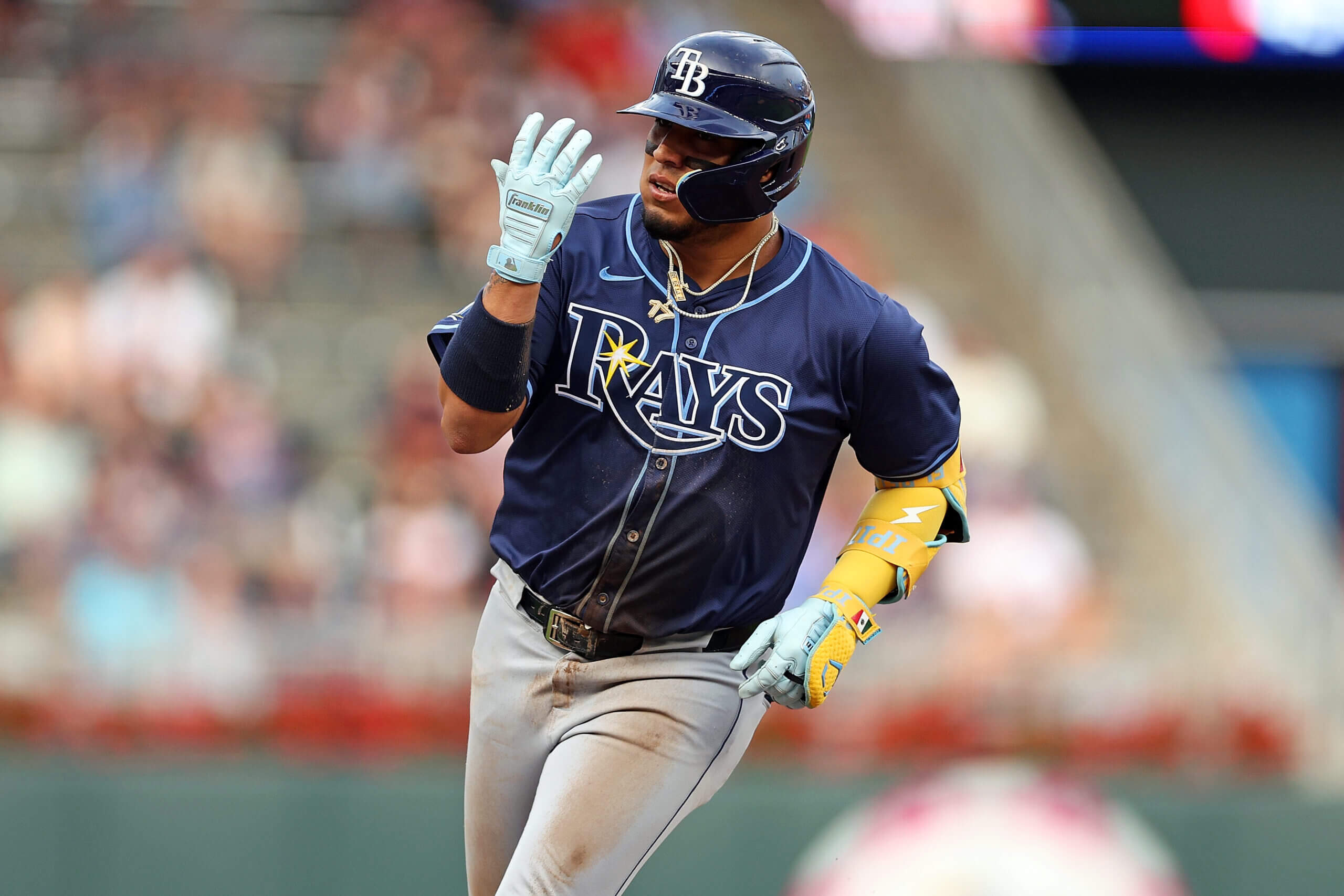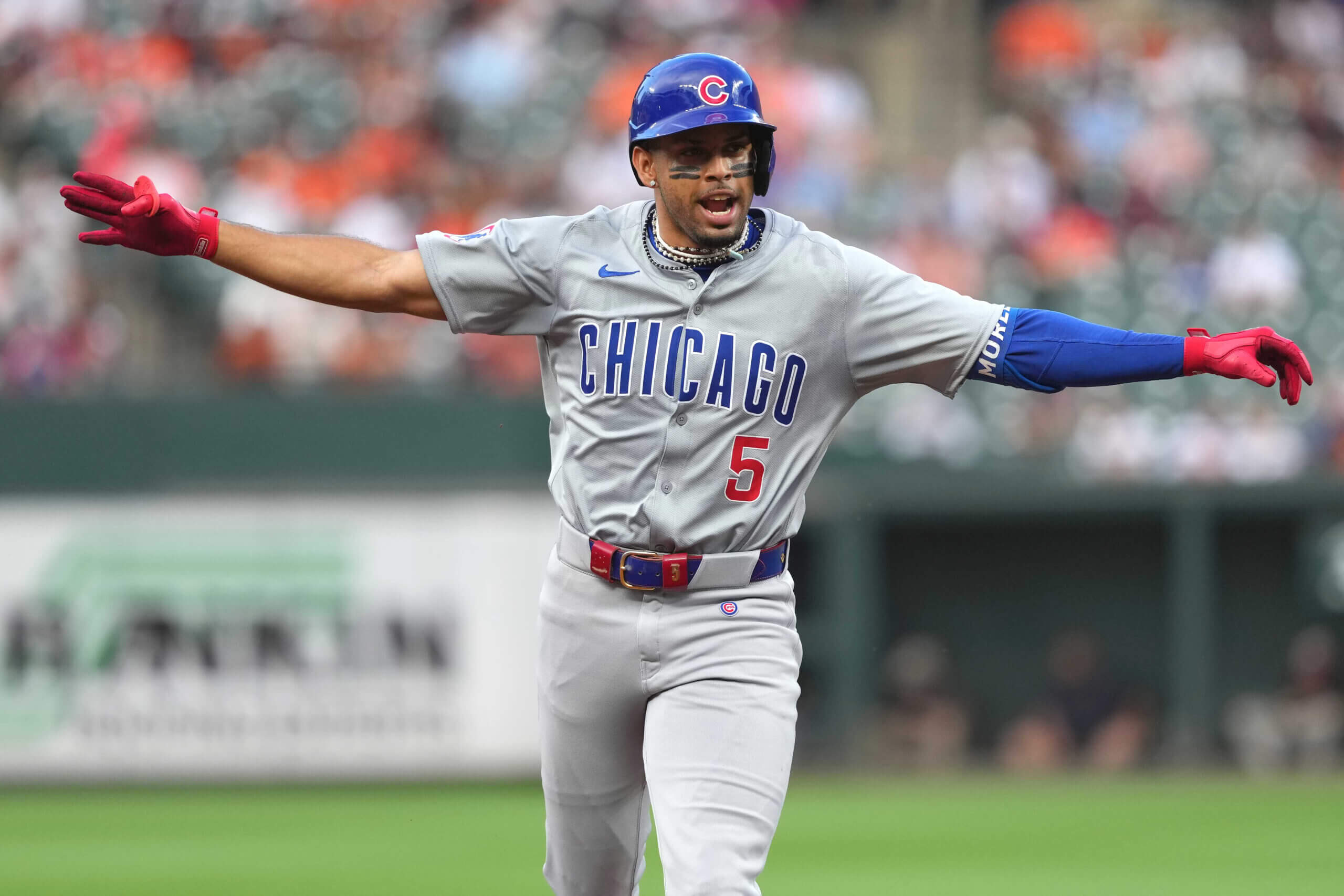
The Tampa Bay Rays are running a clinic on how to sell. And bless their money-saving, prospect-loving hearts, they aren’t done yet.
The scoreboard through Tampa Bay’s latest stunner, the Issac Paredes trade to the Chicago Cubs on Sunday:
- Six deals (Paredes, Jason Adam and Zach Eflin; Randy Arozarena, Phil Maton and Aaron Civale).
- Savings of approximately $12 million in 2024, additional millions in seven future years of arbitration and Eflin’s $18 million salary for 2025.
- Fourteen prospects added, including two players to be named. Nine of those players entered the team’s top 30 according to MLBPipeline.com, between Nos. 5 and 29.
No need to worry about the Rays picking a lane, not with the team spending most of the season around .500 in the powerful AL East. Club officials drove straight into a seller’s market while other clubs idled, and floored it.
If you’re on the ever-dwindling list of Rays making millions — hello, right-hander Zack Littell, closer Pete Fairbanks, first baseman Yandy Díaz and second baseman Brandon Lowe — you probably shouldn’t get too comfortable. The team’s two potential free agents, reliever Shawn Armstrong and infielder/outfielder Amed Rosario, seem almost certain to go.
The Rays, mind you, aren’t in full retreat. Two additions from the Paredes deal, Christopher Morel and right-hander Hunter Bigge, project to join the major-league club immediately. Other trades opened spots for less experienced players such as right-hander Shane Baz and reliever Manuel Rodríguez. Top prospect Junior Caminero is expected to replace Paredes at third base. The 2025 rotation – which could include some combination of Baz, Littell and Shane McClanahan, Taj Bradley, Ryan Pepiot, Jeffrey Springs and Drew Rasmussen – looks formidable.

Christopher Morel should find an immediate place on the Rays’ major-league roster. (Mitch Stringer / USA Today)
Still, the Rays are doing what they do, leveraging their assets, removing emotion from their decision-making, replacing older, more expensive talent with younger and cheaper. The formula works, as evidenced by their six straight winning seasons and 12 of their last 16. But club officials operate with a freedom their counterparts in larger markets do not. Teams with better attendance and greater media attention would invite major scrutiny if they undertook such a dismantling.
Even after all of their deals, the Rays are two games above .500 and just 3 1/2 games back in the American League wild-card standings. Their playoff odds entering Sunday, 14.1 percent, were not all that different from those of the Texas Rangers, Pittsburgh Pirates and San Francisco Giants. But none of those teams was prepared to downshift as dramatically, if at all.
Maybe president of baseball operations Erik Neander and his staff are building the Next Great Rays Team; history suggests it would be unwise to bet against them. But Sunday’s trades, in particular, are far from guaranteed successes, at least in the eyes of some in the industry, who were granted anonymity for their candor.
Dylan Lesko, the centerpiece of the return from the Padres for Adam, was the 15th overall pick in the 2022 draft out of Buford (Ga.) High School. But coming off Tommy John surgery, he has issued 74 walks in 102 2/3 professional innings, prompting one rival executive to marvel at the ability of Padres general manager A.J. Preller to move him for significant value.
The Rays, who excel at developing pitching, surely think they can fix Lesko. But sometimes, their magic dust goes only so far. In December 2020, they acquired another talented young pitcher from the Padres, Luis Patiño, in the Blake Snell trade. Patiño failed to achieve success, bounced to the Chicago White Sox and then back to the Padres. In May, he underwent Tommy John surgery.
Another prospect in the Adam trade, outfielder Homer Bush Jr., must prove he can hit. The third catcher, J.D. Gonzalez, is an 18-year-old at a position where the Rays historically are weak, a worthwhile gamble.
If anything, the Paredes trade is even more fascinating than the Adam deal. Morel’s expected .242 batting average and .451 slugging percentage are far better than his actual .199 and .374, likely making him a standout in Tampa Bay’s analytical model. His four years of additional club control, one more than the Cubs inherited with Paredes, add to his appeal. But the Rays, like the Cubs, will need to find Morel a position. His best defensive metrics are at second base and in left field.
Rival officials view Bigge, 26, as a worthy replacement for Adam in high-leverage situations, with one calling him a “real weapon.” The third player in the deal, right-hander Ty Johnson, was a 15th-round pick in 2023. He was performing well in A-ball this season, and is the type of pitcher the Rays believe they can develop into a starter.
As with all trades involving prospects, the usual warning, “check back in five years,” applies. But say this for the Rays: They will never be accused of indecision. The lack of sellers and limited talent in this year’s trade market screamed for a middling team to jump into the void. The Rays became that team. And they’ve still got time to do even more.
(Top photo of Isaac Paredes: David Berding / Getty Images)